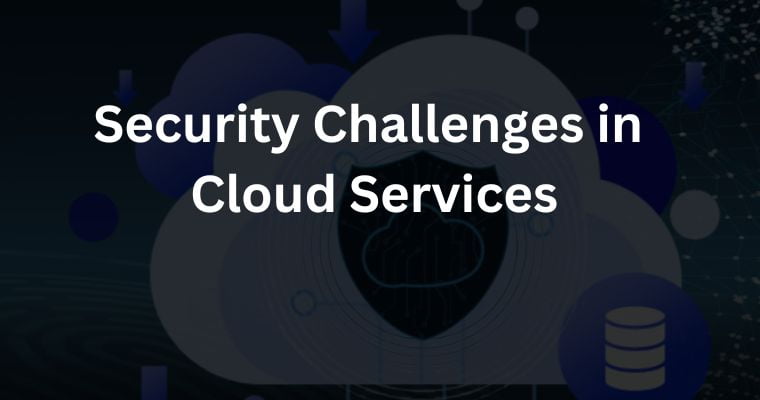In the contemporary digital age, cloud services have emerged as an indispensable component of both our personal and professional lives.
These services provide a range of benefits, including convenience, scalability, and cost-effectiveness, by enabling us to store our photos, and documents, and even host complex business applications.
Nevertheless, as an increasing number of organizations transfer their data and operations to the cloud, security apprehensions have escalated. In this article, we will discuss the security challenges faced by cloud services and deliberate on strategies to mitigate these risks.
Table of Contents
Types of Cloud Services
Before delving into the security challenges, it is important to understand the various types of cloud services:
Software as a Service (SaaS)
Software as a Service (SaaS) provides fully functional software applications via the Internet, thereby eliminating the necessity for installation and maintenance.
Among the various types of digital cloud services, this particular one enables users and organizations to circumvent the requirement of installing and maintaining software on their own infrastructure.
Instead, the software is hosted by a cloud service provider and delivered to users upon demand. SaaS offers numerous advantages, including scalability, cost-effectiveness, and user-friendliness.
Users can access the software from any internet-connected device, rendering it highly convenient and accessible.
Furthermore, SaaS providers handle software updates and maintenance, ensuring that users consistently have access to the most up-to-date features and security patches.
Infrastructure as a Service (IaaS)
Infrastructure as a Service (IaaS) is a cloud service that offers virtualized computing resources via the Internet.
Through IaaS, organizations are able to access and oversee their own infrastructure components, including servers, storage, and networking, without the necessity of physical hardware.
This feature allows for scalability and adaptability, as users can easily allocate and modify resources based on their specific requirements.
IaaS eliminates the initial expenses and upkeep associated with on-site infrastructure, making it a cost-effective solution for businesses of all sizes.
Users retain complete control over their virtualized infrastructure, enabling them to deploy and manage applications and data in a highly customizable manner.
By utilizing IaaS, organizations can concentrate on their core business functions while the cloud service provider handles the underlying infrastructure, ensuring a high level of availability and reliability.
Platform as a Service (PaaS)
Platform as a Service (PaaS) is a cloud-based service that offers a platform for the development, deployment, and management of applications via the Internet.
PaaS allows businesses to concentrate on constructing and maintaining their applications without the burden of overseeing the underlying infrastructure.
PaaS provides a comprehensive development environment, encompassing tools, frameworks, and runtime environments, which simplifies the task of developers in creating and deploying applications.
It facilitates scalability, as resources can be readily provisioned or adjusted according to requirements. PaaS also fosters collaboration among developers by offering features such as version control, testing, and integration with other services.
By leveraging PaaS, organizations can streamline their application development process, reduce time-to-market, and decrease infrastructure expenses.
Security Challenges in Cloud Services
While cloud services offer numerous benefits, there are several security challenges that need to be addressed:
A. Data Breaches and Unauthorized Access
One of the biggest concerns in cloud services is the risk of unauthorized access to sensitive data. Several factors contribute to this challenge:
- Lack of control over data storage: When data is stored in the cloud, organizations often relinquish direct control over its physical storage. This can make it difficult to ensure data privacy and protection.
- Weak authentication and access controls: Cloud services typically rely on user credentials for authentication. If weak passwords or insufficient access controls are in place, unauthorized individuals may gain access to sensitive information.
B. Data Loss and Recovery
Data loss can occur due to various reasons, such as hardware failure, software bugs, or human error. In cloud services, additional challenges arise:
- Inadequate backup and disaster recovery plans: Organizations must ensure that their cloud service provider has robust backup and disaster recovery mechanisms in place to minimize the risk of data loss and enable timely recovery.
- Service provider reliability: The reliability and uptime of the cloud service provider’s infrastructure play a crucial role in minimizing the risk of data loss. Downtime or service interruptions can result in data unavailability and potential loss.
C. Compliance and Regulatory Issues
Cloud services often involve the storage and processing of sensitive and regulated data. Compliance with industry-specific regulations and data privacy laws can be challenging:
- Data privacy and protection regulations: Organizations must ensure that their cloud service provider complies with applicable data privacy laws, such as the General Data Protection Regulation (GDPR), to protect the personal information of their customers.
- Industry-specific compliance requirements: Certain industries, such as healthcare and financial services, have specific compliance requirements, such as the Health Insurance Portability and Accountability Act (HIPAA) and Payment Card Industry Data Security Standard (PCI DSS). Ensuring compliance in the cloud environment can be complex.
D. Shared Infrastructure Vulnerabilities
Cloud services often rely on shared infrastructure, which introduces additional security challenges:
- Multi-tenancy risks: In a multi-tenant environment, where multiple organizations share the same physical resources, there is a risk of unauthorized access to data or cross-tenant attacks. Proper isolation and segregation measures must be in place to mitigate these risks.
- Virtualization vulnerabilities: Virtualization technology, which enables efficient resource allocation in cloud environments, introduces its own set of security concerns. Exploiting virtualization vulnerabilities can lead to unauthorized access or data compromise.
Other Challenges include
- Insider threat
- System vulnerabilities
- Denial-of-service attack
- Hijacking of accounts
- Lack of visibility
- Cloud misconfigurations
- Cyberattacks
- Lack of skill
- Identity and Access Management
- Insufficient identity and credential management
- Shadow IT
- API abuse
Mitigating Security Risks in Cloud Services
To address the security challenges outlined above, organizations can adopt several measures:
A. Encryption and Data Protection
Encryption and data protection play a crucial role in mitigating security risks in cloud services. By encrypting data, organizations ensure that even if unauthorized individuals gain access to it, they cannot decipher its contents without the encryption key.
This provides an additional layer of protection against data breaches and unauthorized access. Cloud service providers employ various encryption techniques, such as rest and transit encryption, to safeguard data throughout its lifecycle.
Additionally, implementing strong access controls and authentication mechanisms further enhances data protection. Regular security audits and compliance assessments help identify vulnerabilities and ensure adherence to industry best practices.
B. Identity and Access Management
Enforcing robust identity and access management practices, such as multi-factor authentication and role-based access control, enhances the security of cloud services by ensuring that only authorized individuals can access sensitive information.
C. Vendor Selection and Due Diligence
Thoroughly evaluating cloud service providers before entrusting them with sensitive data is crucial. Assessing their security certifications, audit reports, and service level agreements (SLAs) can help determine their commitment to security and data protection.
D. Regular Monitoring and Auditing
Continuous monitoring of cloud services and regular audits can help identify potential vulnerabilities or security incidents. Implementing intrusion detection systems, log management, and security information and event management (SIEM) solutions can aid in proactive threat detection and response.
E. Employee Education and Awareness
Training employees on best practices for cloud security, such as strong password management, avoiding phishing attempts, and practicing secure file sharing, can significantly reduce the risk of security breaches caused by human error.
F. Incident Response and Recovery Planning
Having a well-defined incident response plan and a comprehensive disaster recovery strategy is essential in mitigating the impact of security incidents. This includes regularly testing backup and recovery procedures and conducting incident response drills.
Conclusion
As cloud services continue to play a crucial role in our digital lives, addressing security challenges becomes paramount.
By implementing robust security measures, organizations can confidently leverage cloud services while safeguarding their sensitive data and ensuring the integrity of their operations.
With proper encryption, strong access controls, careful vendor selection, and proactive monitoring, businesses can mitigate the risks associated with cloud services and embrace the benefits they offer.



